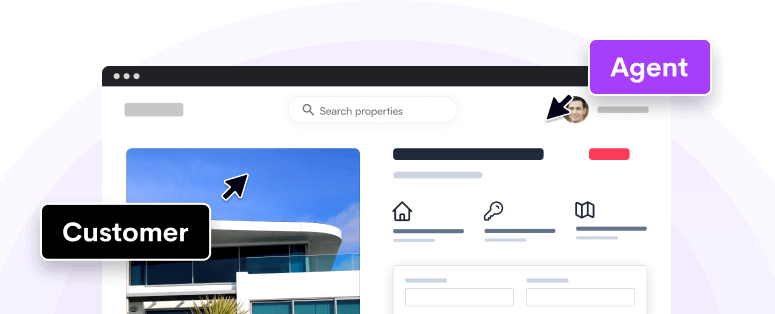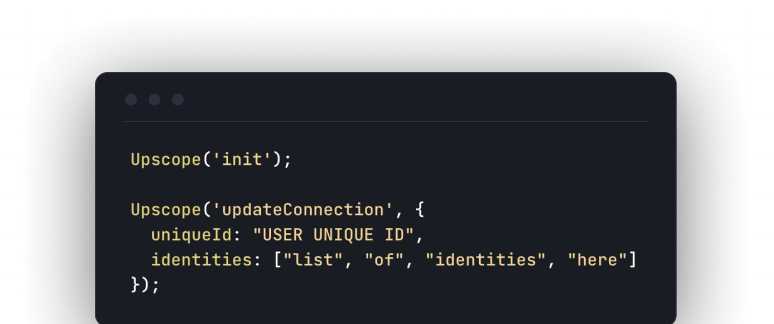Many blog posts have great statistics on live chat but what’s the truth behind
each one? We’ll add our actual experience to each commonly stated statistic.

Live chat and customer service statistics
44% found chat to be important in making decisions
A survey conducted by Forrester Research reveals found that 44% of online
consumers say that having questions answered by a live person while in the
middle of an online purchase is one of the most important features a Web site
can offer.
Our experience? You can tell who the likely buyers are during a chat. They
ask very specific questions as if they’ve done their research. They’re often
looking for clarification on a key point. We believe live chat contributed to
60% of our overall sales so 44% sounds low.
62% switched due bad customer service
62% of global consumers switched products due to poor customer service.
Our experience? We have pretty damn superb customer service in terms of
responsiveness and accuracy but we can’t cover everyone — people asking
questions at 5am London time for example. Did some of them leave and were
annoyed we did not respond quickly? Yes. However, because we have live chat on
our desktop and phone, we responded to 90% of people quickly. We don’t know
enough to comment on the 62% stat but if there is a phone that no-one picks up
or a long winded ‘contact us’ form then that stat is no surprise.
63% were more likely to return because of live chat. 38% made a purchase
because of it
An ATG Global Consumer Trend study found that 90% of customers consider live
chat helpful and an emarketer.com survey found that 63% were more likely to
return to a website that offers live chat. 62% reported being more likely to
purchase from the site again. A further 38% of respondents said they had made
their purchase due to the chat session itself. All these attitudes were even
more prevalent among respondents who bought online at least weekly
Our experience? Hell yes. Getting key questions answered, building trust and
people liking you make all the difference between a maybe buy and a yes buy.
2/3 of consumers encountering problems went to a competitor
More than two-thirds of consumers who encountered a customer service/customer
experience issue on a brand’s website left the site or visited a competitor
https://www.slideshare.net/IBMDigitalExperience/teafleafinfographicr6-140827100411phpapp02
Our experience? As I write this blog post I’ve just got a message about a
competitors success rate and support. We’ve heard this so many times that
we’ve added a comparison page and linked it to the home page. So yes, in our
experience this is absolutely true.
6–7 times more costly to attract a new customer than retain existing one
It is 6–7 times more costly to attract a new customer than it is to retain an
existing customer. 89% of consumers have stopped doing business with a company
after experiencing poor customer service
https://www.salesforce.com/blog/2013/08/customer-service-stats.html
Our experience? Yeah, no brainer. When an existing customer needs something
then helping them helps keep them. Churn is deadly!
35% increase in use of live chat in 3 years
Over 3 years between 2009 to 2012 there was a 35% increase in the number of
people who had used live chat at some point
Our experience? All our competitors are installing it by default. There is
probably 1 company in 10 in our space that does not have live chat and I’ve
seen how many reviews their product has. Not bloody many.
Why does it work?
It’s immediate
“The higher levels of satisfaction with online chat are partially due to the
efficiency and immediacy of the experience””
Our experience? Yes and no. Live chat is a bit like texting and that’s why we
like it. People do like an immediate response of course but just like texting
they’re also happy to get time to drink a coffee while chatting.
It builds trust
“77% of people shopping online would like to make contact with a real person
before making a purchase, and over half say that the lack of interaction has
caused them not to purchase.”
Our experience? This point has already been made but there is a something to
add. Plenty of people buy without chatting to us, however live chat helped us
figure out how to make this happen. The questions they asked on live chat told
us where we were going wrong: 1. Have a better about us page. 2. Have more
testimonials. 3. Simpler pricing and FAQ. 4. Have a comparison page with
competitors.
It’s cheaper and faster
“Agents can support multiple customers simultaneously (typically 4–5, but
sometimes more!) this is far less costly than phone support where agents can
support only one customer at one time”
Our experience? Yes and also we can work as a team. The live chat tool I use
allows me to type @Joe and get Joe into conversation when I can’t handle it.
It’s natural
We found that it also lets users multi-task as well. They are doing multiple
things and just like text messages, you can take a moment to compose without
the pressure for an immediate reply. On a phone it’s weird to pause for too
long and on text it’s natural. Lets face it, we don’t even phone our friends
these days when a text will do.
What are businesses saying?
These are statistics taken from companies using a range of different live chat
services.
Increased signups by 31%
Ez Texting managed to increase signups by 31%. The chat widget was
strategically placed so that if a user has any doubts before making successful
signup, he could ask it on the live chat widget.
https://vwo.com/blog/live-chat-increases-signups/
Average order value is 15% higher
Virgin Atlantic has had tremendous success using live chat to upsell
customers, they encourage you to speak with a person as opposed to sending
inquiries via email.“Virgin also has found that average order values for
consumers who use live chat is some 15% higher than for consumers who do not
use the tool.”
https://www.digitalcommerce360.com/2012/09/06/virgin-soars-customer-service-live-chat/
50% greater response for feedback inquiries
The Desk.com team gets a greater than 50% response rate to their Intercom
inquiries for feedback. They’re also able to reach more customers with
Intercom. Overall, the number of responses they receive has skyrocketed. And
those responses, says Scott, are far more detailed and insightful than old
survey results. Desk.com customers are happier to hear from a product manager
instead of receiving an impersonal survey.
40% response rate to ‘why did you cancel’
When people cancel, it’s important to understand why. Droplr triggers a
message to users who have canceled their accounts. The response rate is nearly
40% and has provided nuggets of insight into Droplr’s audience and needs
Response rate for feedback increased to 26%
BugHerd. The team tried engaging users through emails sent with its existing
lifecycle marketing solution, but response rates were well below 10%. Lack of
quality feedback posed a major hurdle in prioritizing further development of
the product. (After live chat support) stack engineers saw response rates
shoot up to 26%. They still send emails to reach a small subset of users who
haven’t logged into their app in a while, but in-apps have been a far more
effective way to engage with their audience.
30% increase in trial-to-paid conversions
The result of being able to deliver targeted communications is sheer
efficiency. Nick says that Intercom has given the sales team the ability to
manage a large number of leads very quickly, leading to a 30% increase in
trial-to-paid conversions.
14% reduction in churn
Put.io has been using Intercom for about a year to listen and talk to its
users, and according to Hasan, the dynamic has completely changed. Best of
all, it’s led to a 14% reduction in churn. After replacing its support forum
with Intercom
Suddenly, the tone of our customer conversations went from negative to
productive.
Open rate of auto-messages is well over 70%
The average open rate of its auto-messages is well over 70%, while response
rates to requests for feedback typically fall in the 30% range
Sign ups doubled from 4% to 8% of visitors creating a free trial
We started to see results soon after installing Olark. For instance, visitor
to trial sign-up rates doubled, increasing from four to eight percent of all
visitors creating a free trial.
£1,000 sale on chat in one day
“Having an ‘always on’ communication channel and the ability to customize the
chat experience makes our customers happier, and makes us appear to be a
larger operation than we really are,” says Tevita. “This in turn instills
trust in our new and returning customers, which leads to a higher likelihood
of completing a sale.”
https://blog.olark.com/how-nosh-detox-is-using-live-chat-for-sales
24% of our new customers initially contact our team via live chat
Before implementing live chat, Touch Support already had a pretty high average
customer satisfaction score of 84 percent. After the implementation, it bumped
up by 11 percent! “Our live chat customer satisfaction rating this past month
was 95 percent!”, said Brent.
High customer satisfaction has direct relationship with their sales. “So far
in 2015, 24 percent of our new customers initially contact our team via live
chat, what translates into over 30 percent of our expected revenue”, stated
Brent.
https://www.livechatinc.com/customers/customer-stories/touch-support/
Technical issues resolved 4 times faster
Live chat also helped to save countless hours on support interactions. On
average, Touch Support technicians resolve issues within 34 minutes through
their helpdesk. Customers that reach them via chat typically have their issue
resolved in 9 minutes or less, nearly four times faster than before!
https://www.livechatinc.com/customers/customer-stories/touch-support/
Unexpected uses and benefits
7% to 26% jump in additional use by using chat services to send reminders
To tackle this problem, we used Intercom.io to send conditional emails
depending on where in the chain you are. The results have been incredible to
watch. While on average just 7% of users who start a trial will add a custom
theme or domain name, that number jumps to 26% if they watch one of our
tutorial videos and go through the onboarding progress steps.
200% increase using one reminder feature
“How can I possibly reach my revenue goal in time?” it dawned on me that I
could use Intercom to accomplish this reminder window with very little work. I
had a 200% increase in subscriptions the day I turned this popup on. I ended
up meeting my goal 9 days early! And the increased rate has held steady.
https://blog.intercom.io/how-draft-grew-paying-customers-by-200/
Any problems?
If you are not looking for feedback and are simply looking to encourage sales
then there might be too many low quality leads depending on your service. We
did find many questions that could just as easily have been covered by an FAQ
and conversations that led nowhere.
“Live chat is a living distraction. Whether you’re writing something,
programming, or even responding to customer tickets…once you hear the “ding”
of a live chat, your brain is derailed. Even worse, the customer on the other
end may have large gaps in their response — giving you just enough time to
restart your previous task before getting distracted again.”
If a customer encounters a live chat widget, they expect to be able to talk to
you right away so if you don’t respond immediately then you can instead end up
disappointing them.
Final thoughts.
Live chat will be default for most businesses. It fits with a buyers mind set
and expectations. Phone numbers still matter but live chat makes more sense
for both the buyer and the business.





